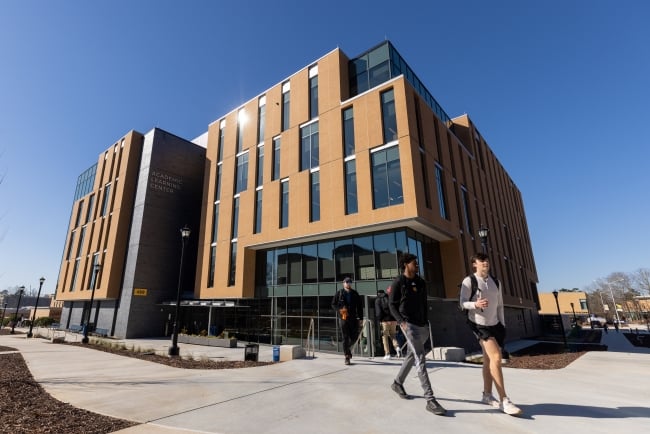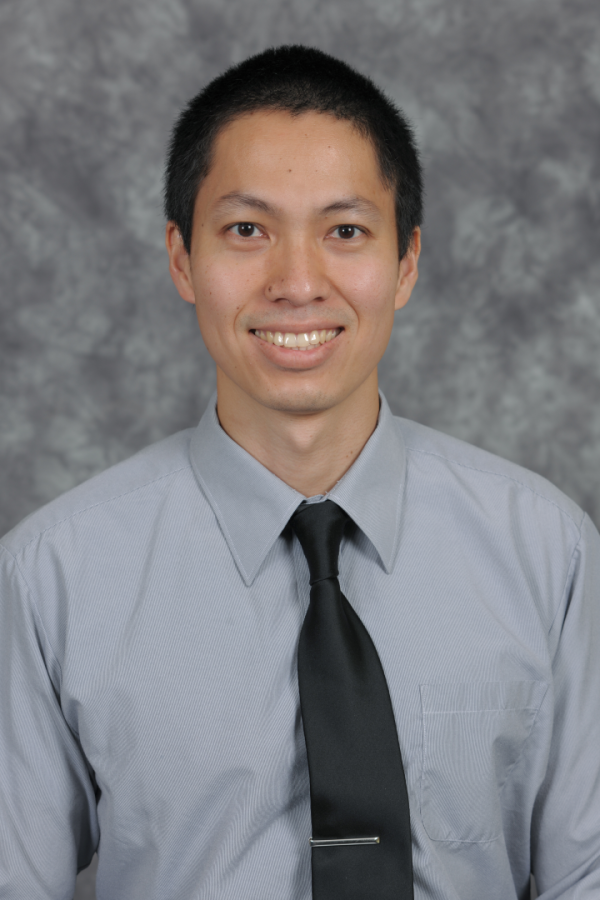You have /5 articles left.
Sign up for a free account or log in.

As the inaugural associate dean success and engagement in the college of humanities and social sciences, Chen will oversee academic events and data-tracking.
Kennesaw State University
Hung-Tao (Michael) Chen first realized his passion for student engagement when teaching elementary education in Taiwan.

Kennesaw State University
Chen, now a Kennesaw State associate dean for student success and engagement in the college of humanities and social sciences, was born in Taiwan but grew up in Belize before studying at Berea College in Kentucky. After completing his undergraduate degree, Chen returned to Taiwan to complete his military conscription and was assigned to be a civil educator in a small mountain town.
There, Chen taught English to around 50 children from kindergarten to fifth grade, quickly learning the importance of engagement in the classroom and how it impacts student success.
Chen spoke to Inside Higher Ed about his new role at Kennesaw state, his interest in research-backed interventions and the importance of holistic support in promoting student success.
Q: What led you to a career in higher education?
A: While I was serving [in the military], the Ministry of Education … looked for people that fit their needs. And they were like, “You can speak English, so we want to send you to one of these really remote mountain villages—it’s all tea farmers—to teach English to the kids.”
So I went to boot camp, special training, and they shipped me off to this really remote mountain school. It was K-5, elementary school, each grade only had one class.
But it was during that time that I thought, how do I teach these students? Because when I first showed up, I had a lot of enthusiasm … I had my guitar out and things like that to engage the students. It was easier with the younger students … but when I was talking to the fourth grade and fifth grade, it’s much harder to engage them. Because they were like, “Why do we need to learn English? When we graduate, we’re going to go to middle school, and once we finished high school, we’re going to work at the local gas station or 7-Eleven.”
For them, getting off the mountain to town, that’s all that they needed. If they can just do that, that was their end goal.
It was during that time that I really got into reading about education, psychology and cognitive psychology journals—how do I teach these students and engage them? How do I structure my class so that learning is effective?
I realized that I really enjoyed reading these psychological research studies. That led me to a grad program back at the University of Kentucky. When I graduated, I got a job with Eastern Kentucky University as a professor. So that’s how I got into higher ed in general. But then from then on … my research is all about learning, design of lecture videos, interventions in the classroom. I’m very much a scholarship of teaching and learning person, not just in the classroom, but also in the lab as well.
In my role, I work with both students and faculty members, but always I am still thinking about student success. How do we help students learn? How do we keep them engaged in the classroom? How do we inspire them for a career right for bigger and better things? Thinking back to my kids in the mountains, the elementary school kids, that’s where it all started. And I’m still going down that same path, doing similar things.
Q: What strategies do you use for student success initiatives, particularly since COVID?
A: My methodology has always been, “Let me look at the research.” … COVID is so new, the students are coming out and … we’re seeing a lot of different things. But there’s not a lot of guidance on how to engage them. But I think some of the existing frameworks still could inform us about this.
We have to be careful too with research because there are things that look really good in the lab, and they don’t necessarily translate well to real-life settings.
There were research studies out there that when I first got into it, I thought, “Oh, wow, this is awesome. This can change a lot of students’ lives, I need to implement this.” But once I tried to implement it, I realized that the effect size and the actual real-world effects were very, very small. You can exert all this effort into this, but you don’t get much in return.
So I try to look at student success with a more holistic approach. The one that I always go back to is Vincent Tinto, he’s got a more holistic approach to look at different layers of how students engage.
Q: How have student engagement needs changed?
A: When students went from online [learning] to back in-person, we see that they really crave that interpersonal interaction. This is super interesting, because for a freshman orientation, first-time students, young 18-year-olds coming to college, when they are registering, overwhelmingly, we hear them say—and this is across two institutions, here at Kennesaw State, Atlanta population, versus where I came from previously, Eastern Kentucky University, more rural—"I want in-person classes, I don’t want online.”
First-time students, they want that engagement, they want that socialization. The research shows that when a student has these really strong social connections, the quality and strength of those relationships predicts success. The more strong, quality relationships you have, the more likely you are to be successful.
But what we find is that when students become juniors and seniors, overwhelmingly, they’re starting to take online classes, they just gravitate to taking online classes … And I don’t have the research findings for this. This is just observing, observing in the classroom, as I’m running orientation and registration. It seems that once students come in, and they have formed those social network bonds, then they say, “OK, I have these connections, now I want to focus on getting things done as quickly as possible, and as flexibly as possible, so that I can go on to a career.”
That’s more of a trend post-pandemic … So how do we address that?
Q: How do you apply the research to your work at Kennesaw State?
There is the part of the research that talks about how the institutional experience can shape students’ behavior.
There are really four parts: there’s the academic part that divides into formal and informal and then there’s the social part, also formal and informal.
The academic formal part—curriculum and pedagogical stuff into the classroom—we have another associate dean who works on that. My part is the academic informal part, so advising—I, along with another university unit, we oversee advising for my college. So it’s talking to my advisers, “What are you seeing? What are the students saying, how can we encourage them to take 15 credit hours per semester? How do we help them graduate on time? How do we catch the people who are on early alert and try to bring them back?”
And then there’s the social part, I don’t work on the social informal part, I feel like that would be an overreach of my job. But the formal social part, I put on a lot of events. For example, we have one that’s called “365 Days of Learning and Service” that is a mixture of service learning, but also lectures. Even with the lectures, I try to give students time to ask questions and to have a time to interact with the speaker afterwards. That part is giving students the opportunity and space to form those connections.
One thing that I’m doing right now, that’s not yet implemented, but I will start to implement—again, I’m one month in. Whenever I put on these service learning programs and such, we’re going to ask students to use their ID to tap [in], so we can track the students who come. So for each event that we put on, all the students that are coming, their student demographics, are they commuters or are they residential students? Gender, ethnicity. Are we reaching the students most at risk? Are they coming to these events? Are they building relationships?
We don’t have that in place yet, but I want to build that system, but also, we will build this dashboard. I just met with our analyst a couple of days ago. We’ll build this dashboard so that at the end of the semester, we can say, at a glance, we have these events that we had put on, these are the type of students that come, these are the events that they attended the most. Then I go back to my collaborator on the curriculum and the faculty side and say, “Hey, tell me who are the students who are most at risk here … what sort of program can we put on to promote success for these students?”
Q: What are your goals within the role?
A: Really, the first year is just to learn how things are done, and implement one thing. And that one thing for me right now is the data tracking.
Once I have the dashboard built, and I have a more holistic measure and picture of how students engage with the university—or at least engage with our college—then I can start to look at scholarship of teaching and learning that’s the soul, the research part, and think, “OK, so how do I revise my programming so that I can identify students who are at risk, and reach out to them?”
The first step is to build a system to identity students at risk, or at least know how our programming or different events are effective or not effective. And then with the research, then have a very targeted approach … and then revise accordingly. So that’ll be the end goal, where we can start to do that smoothly.
Seeking stories from campus leaders, faculty members and staff for our Student Success focus. Share here.




